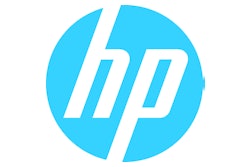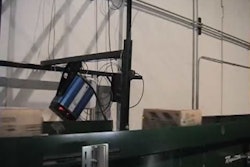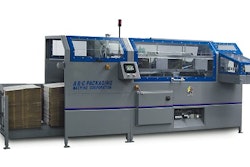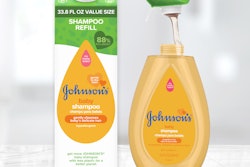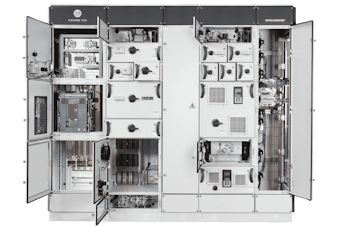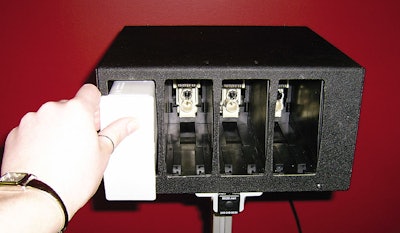
This content was written and submitted by the supplier. It has only been modified to comply with this publication’s space and style.
Here’s a scenario packagers face more and more often:
• Their customer—often retailers—demand better, more precise codes on packages. Fines for unreadable bar codes are a preventable cost that packagers want to avoid.
• Shorter runs require more changeovers.
• Production economics demand maximum line uptime.
• Management wants to operate with fewer skilled, highly paid line mechanics.
For coding, the answer to these diverse demands comes from a sophisticated technology that has the finesse to meet all these needs.
Yet, it has the brawn to deliver quality printing in some of the most hostile production environments you can image.
The technology is thermal inkjet coding. It can print highly readable codes on shippers—alphanumeric characters two inches or more in height, and bar codes that meet readability specifications. Yet, it can deliver crisp, 1?2-inch or smaller codes inconspicuously on primary packages made from a range of common packaging materials such as paperboard, spunbound polyolefin, and some plastics.
The technology is cost-competitive with older technologies when total system costs are evaluated.
First, a look at how it works. Thermal inkjet—TIJ for short—is the technology of office inkjet printers. Like the office printers, it delivers high definition printing, as fine as 600 dots per inch (dpi). It delivers that kind of resolution at typical packaging line speeds—lines running up to 250 feet per minute.
It does that with technology developed by HP. The key is that each cell in the print head is a small “cannon.” A picolitre of ink is in each cell; when the cell “fires,” a millisecond burst of electrical energy generates enough heat to create a layer of vapor around the ink. The vapor ejects the ink “bubble” from the cell onto the package in front of it, which could be a corrugated shipper, a carton, or other package.
Multiply that by as many as 300 cells per inch, and crisp, clear letters, numbers, and bar codes are formed. The imprints are so good that TIJ delivers consistently readable bar codes in applications where earlier inkjet technologies could not.
Has to Be Tough, Too
Sophisticated technology is only half the story. To meet packager needs, TIJ has to withstand abuse in plant environments. In many cases, it can take more abuse the earlier continuous inkjet coders.
For example, an application at Canadian Forest Products Ltd., Isle Pierre, BC, Canada, has coders enduring the assault of pieces of lumber literally flying off a conveyor line. At Dal-Tile, Dallas, TX, coders have to work in a dusty environment and print heads have to keep operating without clogging. And there are many other applications that show how the technology survives really tough plant environments.
Two elements meet these needs:
First, thermal inkjet itself is simple to maintain. Its nature means that maintenance is often simply wiping the face of a print head to remove dust and dirt. If a print head is damaged, it’s simple to snap out the damaged print head and snap in a new one that costs $30 to $50. Contrast that to continuous inkjet where replacement means having a spare—worth thousands of dollars—on hand and then sending the damaged head back for rebuilding.
In the Canadian lumber mill, errant pieces of lumber can actually smash a print head. With TIJ, the print heads are small enough so that they are enclosed in heavy metal to deflect any damage-causing wood. But, even if a piece of wood breaks a print head, the “snap-in, snap out” installation allows quick replacement rather than removal and rebuilding of the more complex continuous inkjet head.
The other plus of TIJ is the ink system. It is enclosed, precluding contamination. Unlike earlier continuous inkjet, TIJ is not recirculated where it picks up dirt and dust from the environment and loses solvent that evaporates.
Total Cost of Operation
TIJ may appear to be at a cost disadvantage to older continuous inkjet systems when the cost of ink is the only consideration. However, factoring in costs of maintenance, costs of rebuilding damaged units, and the costs of other supplies such as make-up ink solvent, TIJ may be the least-cost solution. And with new HP Bulk Ink products, total cost per mark continues to decrease.
One factor in reducing operating costs is the reduced maintenance and the use of line operators rather than mechanics to operate equipment. Experience shows that line operators can handle setups. And line operators can perform maintenance in less time than with continuous inkjet.
Jim Schultz operates a tray packer at Faribault Foods, and he puts it this way: “With the old continuous inkjet system, each morning I had to start by wiping the inkjets clean. Sometimes I had to clear clogs with a toothbrush,” he says. “Then I would have to run a few cases to be sure nothing was clogged. And, we always had the mess of ink that had dripped on the floor. It might take me 20 minutes to get the coder ready.”
He notes that with a new TIJ inkjet system the toothbrush is gone, the cleanup ritual is gone, and the thermal inkjet units fire up each morning as a routine part of the machine start up.
Other plusses for the thermal inkjet systems include software that allows quick changeovers of what is printed, including on-the-fly changes so that individual packages passing by the print head could receive different codes.
Software flexibility demonstrates an advantage of the distribution system that brings HP thermal inkjet technology to packagers. Coding machines are sold through OEM manufacturing partners—distributors who have both software and supplies expertise.
HP brings the thermal inkjet technology with the patented print heads that make the entire system work.
The partners bring knowledge of packaging and production environments. Their experience in coding and plant operations gets the most out of the TIJ technology. And, they use that expertise to integrate solutions into what can be extremely tough operating environments.
See sidebar to this article: Coding Inks — Advancing Technology Solves More Problems
